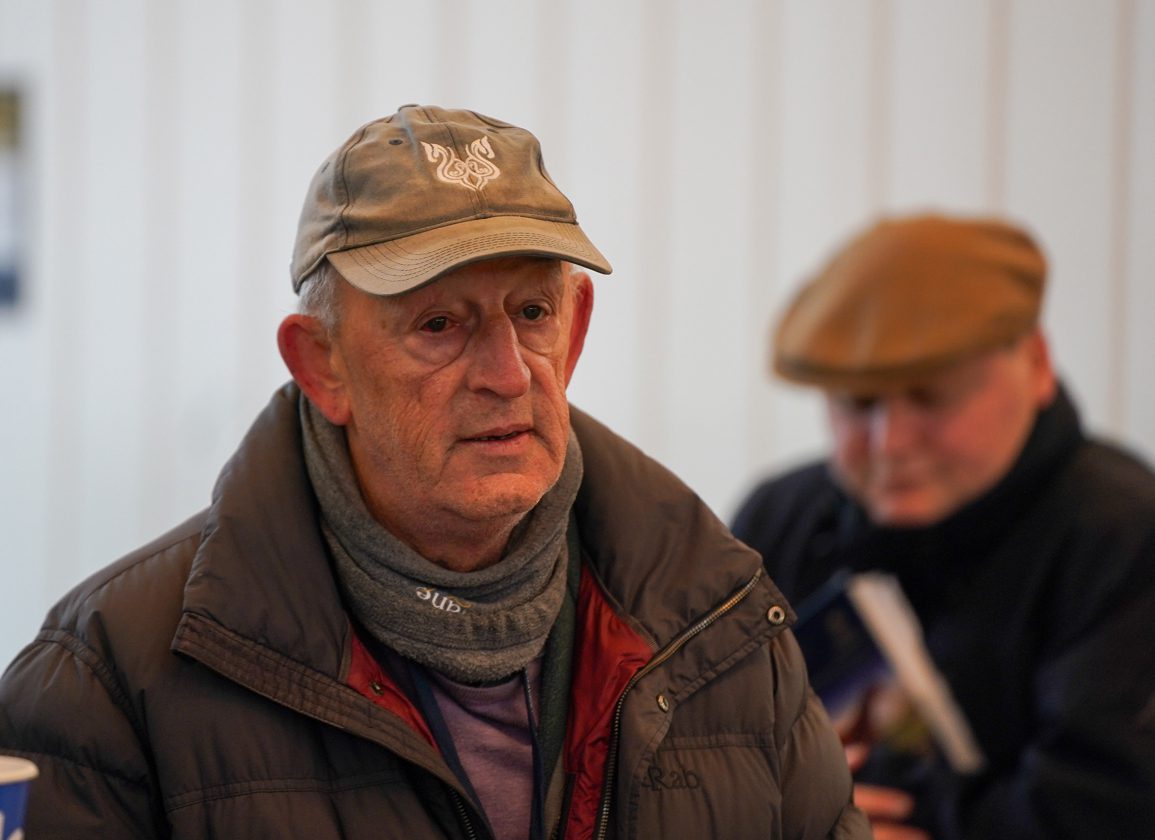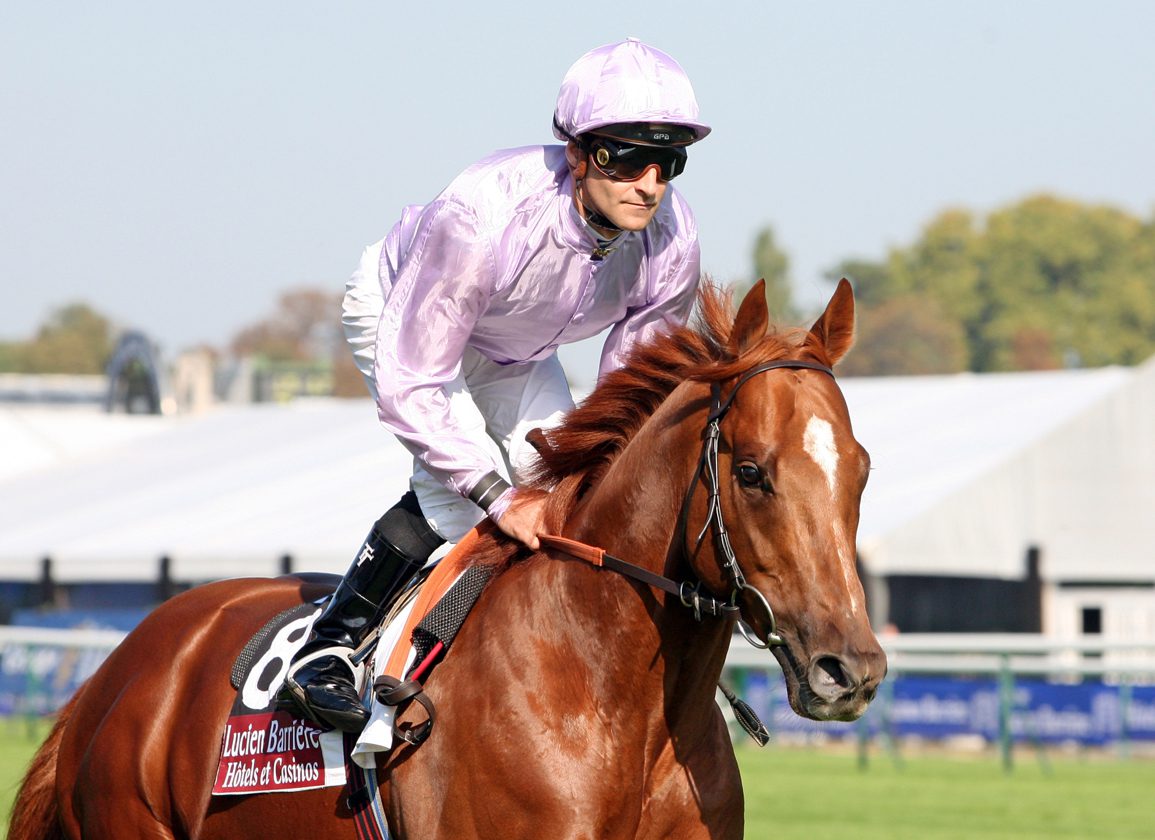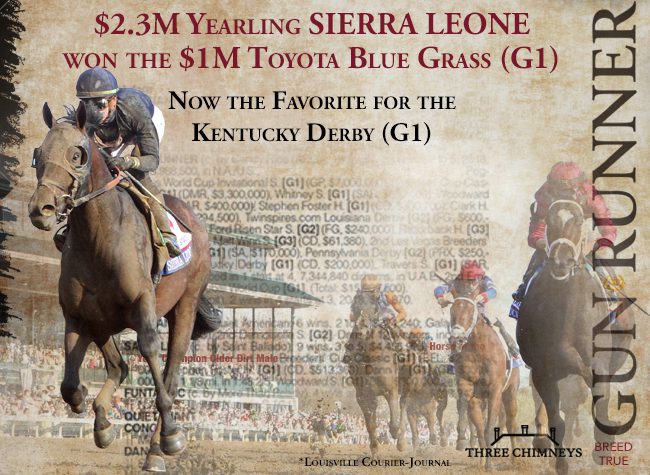By Brian Sheerin
The Tattersalls December Mares Sale marked the end of an era with Paul and Sara Thorman bringing the curtain down on their Trickledown Stud.
Trickledown made its first public offering back in 1990 and has seen a kaleidoscope of change in the industry ever since.
The Thormans will forever be associated for having back-to-back 2,000 Guineas winners–George Washington (Ire) and Cockney Rebel (Ire)–through their hands in the early noughties
George Washington was sold by Trickledown on behalf of his breeder at Tattersalls in 2004, where he topped Book 1 when selling to Demi O'Byrne on behalf of Coolmore for 1,150,000gns.
Meanwhile, Cockney Rebel, who was bought as a foal by Trickledown for 15,000gns, turned a pinhooking profit when selling to Bobby O'Ryan for £30,000 as a yearling. George Washington won the 2,000 Guineas in 2006 while Cockney Rebel followed up the following year.
Amazingly, Thorman's association with back-to-back Guineas winners does not rank as his greatest day in the sport. Instead, it was the pinhooking of Dutch Art's dam–12,000gns into 710,000gns in less than a year–which towers above everything else.
In this week's Q&A, Thorman reflects on some of those great days as well as his concerns for the sport and future ambitions.
You brought the curtain down on the Trickledown consignment at Tattersalls in December. Was the much emotion involved in that process?
It wasn't so much emotion but more relief. Sara got hurt at Book 3 and when I went to see her in hospital that night I said, 'right, that's it, we'll finish now.' I'd been pushing out the retirement and I know Sara was ready for it as well. You know, when there is a yearling or a foal misbehaving, you are the one who has to grab a hold of it. There comes a time where that is no longer the sensible thing to do and we were ready to retire. We have been the luckiest people in this industry and had the most amazing staff. Some of the staff have been with us since they were 15 or 16 and came back to us after they've had a family. We've also had some brilliant owners, the likes of Chris Mills and Ray Townsend, who have been with us for 30-odd years. No outfit can operate and survive without good owners and staff and we have been blessed with both.
The consignment business has changed a lot since you and Sara started. Trickledown would have been one of the first major consignors in Britain back in 1990. What have been the biggest changes that you have seen since you started?
Since we have started, we have seen the likes of Castlebridge, Barton and similar outfits become huge. We've had our loyal bunch of supporters but, as they have gotten older, some have dropped away. Young people like to work with young people and that's why maybe Castlebridge and Barton consign major numbers. I mean, when we started, we used to consign 80-odd foals and we had the best owners that anyone could ask for. We consigned over 1.5m gns worth of foals three years running at one point. This year, the same group of owners were down to just 30 foals to consign. We haven't had a new client for five years. Certainly not a major client. But things evolve and we certainly hadn't been looking for that same volume of work as we were. It has dwindled down without us doing anything and things move on. It was time.
I know you've had a lot of good horses through your hands but, in many ways, you have been the champion of the smaller breeder. With that in mind, how tough was it to watch on at the breeding stock sales last year?
Oh, for sure. We gave, and I mean gave, two mares and two foals away. These are animals that, five years ago, they would have made five or six grand to Italy or wherever. I had to work hard to give those horses away and, I promise you, they weren't wrecks. You can very quickly work out if a foal is a wreck and if it is never going to be worth anything but these were not wrecks. The two mares we gave away would certainly have been viable three or four years ago. These mares and foals belonged to smaller breeders who have been great clients of ours and it was bloody hard turning to them to explain what was going to happen. Now, we did telegraph it a long way out because the horses were all by stallions who had fallen off a cliff. But, even when you put no reserve on the horse and you don't even get a bid in the ring, that takes a shine off things. Fashion has never been stronger. We used to be able to sell yearlings by unpopular stallions. If they were good-looking horses out of reasonable mares, they'd find a level and sometimes that level was quite good. Sir Mark Prescott, Peter Makin, the likes of those people would always buy a good-looking horse by an unfashionable sire. Now, if you have picked the wrong sire, there is nobody for it. Stallions are never as good or bad as fashion says they are.
Will fashion play much of a role in your pinhooking? I suppose it will have to.
The only thing about fashion when pinhooking is that you have a year for things to change. You couldn't buy a Havana Grey (GB) at Tattersalls in December unless you had a big budget but there were some stallions out there that you felt still had mileage in them so you were happy to buy a foal out of those horses. The most expensive foal we bought was an Ardad (Ire). He had 108 foals two years ago so he has plenty of runners to represent him this year. He was also one of the leading first-crop sires two years ago so he must still have a chance, mustn't he? This foal was a dinger. Now, if Ardad doesn't come off, we might be lucky to get thirty grand for him. But if Ardad comes back into fashion, this could easily be a one-hundred grand yearling. It's buying a lottery ticket, isn't it? There are several horses you could have said would have had the makings of being a decent first-crop sire last year. There are probably four of those stallions who have absolutely been canned already. I mean, you cannot get a bid if you are by any of those stallions. But they are not that bad. Fashion has multiplied their disappointment.
Getting back to the foal sales, have you any other thoughts as to why things were so bad for your clients?
There weren't any foreign buyers at Tattersalls. I got talking to one of the transport men and, I don't know if he was spinning a yarn or not, but he told me that between Brexit and the English paperwork, it costs the foreign buyers on average one thousand pounds more to get a foal home from England compared to Ireland. That has certainly made a difference. There was more of a market at the lower end at the foal sales at Goffs in Ireland. But at the other end of the spectrum, we had a decent order to go and buy a foal. We were prepared to spend fifty, sixty or seventy grand but, everything we liked, we just kept on getting blown out of the water. We weren't even finishing second or third on these nicer foals.
Your broodmare band is down to four. How hard has it become to breed commercially? It's obviously a lot more expensive to produce the horses and perhaps now more so than ever you have to be very careful about what stallions you choose.
Our philosophy to breeding has changed a lot but that is due to circumstances. We don't have the farm anymore. When you have a farm, whether you've six mares in a field or eight mares in a field, it doesn't make a fat lot of difference. You can kid yourself that you are keeping them for nothing so, that chancy mare, you might sit with her an extra year or two. When we gave up the tenancy of the farm, we looked at our mares very critically and decided that, if they had two runners that were no good, we shifted them on. Again, I wanted to buy a decent mare in December but didn't because my want list was bigger than my budget. The mares I have are getting a bit older and I could do with some new blood in there. But it's funny, all the good mares I have bought down through the years, I've almost bought them by mistake. The cliche is that the good mare finds you and that you don't find the good mare.
You've had your fair share of good touches. Is there one result that towers above another?
It would have to be Halland Park Lass (Ire) (Spectrum {Ire}), the dam of Dutch Art (GB), because, again, I bought her by mistake. I had no intention of buying her. I had a bunch of friends who told me that, if I saw a cheap mare, they'd like to come in on one with me. They were two veterinary surgeons from Newmarket and an auctioneer [Ollie Fowlston]. Every mare I tried to buy for us, I got blown out of the water. A friend came up to me to tell me about Halland Park Lass and said 'she won't do you any harm.' I couldn't find a reason not to buy her so I bought her. I had seen Dutch Art at Doncaster and, although he wasn't the best-looking yearling, I remember being taken by how athletic he was. That was a great story because the two vets bought houses on the proceeds of her sale, as did the auctioneer. I sold a foal out of the mare to my daughter when Dutch Art won his maiden and that ended up helping her to buy a house. For me and Sara, the biggest thrill of all was the fact we did it for relatively small people. When we sold George [Washington], yes it was great and he was the only yearling that year to make over a million, but the owner was already a millionaire and had a big reserve on the horse. So, it was almost a relief when he sold rather than a slap on the back moment. Anybody could have sold George. Well, maybe not anybody, as he wasn't the simplest fella to deal with. The bulk of the fun we had at Trickledown was when people got a touch and it really mattered to them.
Given everything you achieved–being associated with back-to-back Guineas winners and that massive profit with Halland Park Lass–is there more left to tick off?
I'd love to own a very good racehorse. We've had plenty of fun with the horses we've raced but never had a real one. But then again, we tend to race what we're left with rather than what we really like. There might be an opportunity to keep one that we really like going forward. Sara and I are very much into our point-to-pointing and we've got two pointers in training with Chris Barber, one of which we know is only going to be a fun horse. We went to 17 or 18 points last year and had so much fun. If I was to ever win one of the big races, the Foxhunters at Cheltenham or Aintree would be top of my list. Could you imagine the buzz? That would be a dream.
And who will consign your horses going forward?
David Hegarty, who has just set up on his own, and Robbie Mills, who is actually the son of Chris Mills, who we have sold horses for for over 30 years. He's trading as RMM Bloodstock. You watch them over the next year or two. Both are exceptional talents. They'll find it easy following us!
Not a subscriber? Click here to sign up for the daily PDF or alerts.







